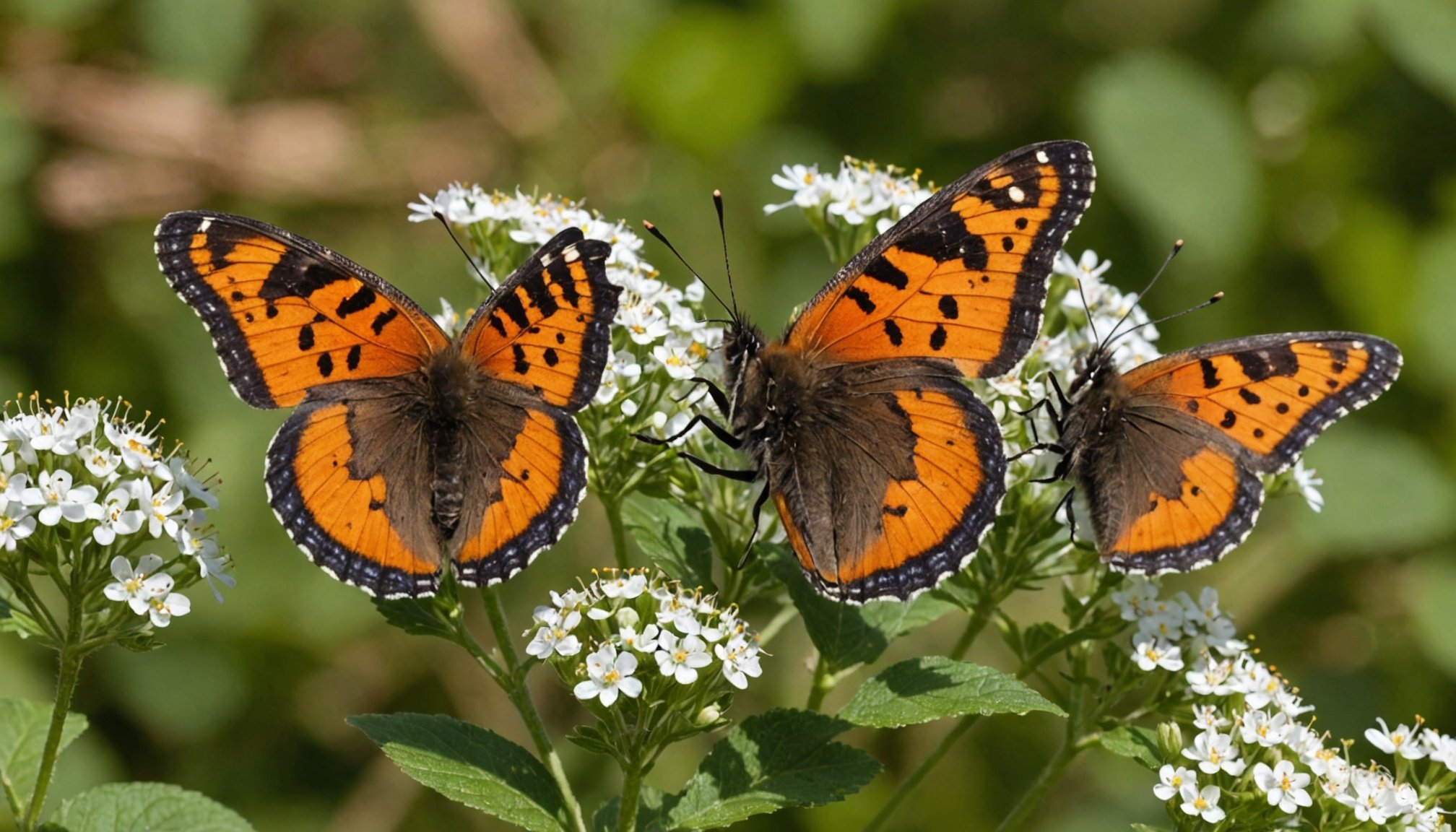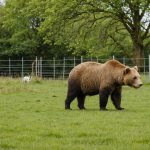Climate change poses severe threats to Britain’s delicate ecosystems, particularly affecting native butterfly populations. As temperatures rise and habitats shift, these vital pollinators face increasing challenges for survival. This exploration reveals how environmental changes influence their life cycles, distribution, and interactions with other species. Understanding these effects not only highlights the urgency of conservation efforts but also emphasizes the interconnectedness of all living organisms in our changing world. Discover how these captivating creatures are responding to climate fluctuations and what it means for biodiversity in Britain.
Overview of Climate Change and Biodiversity
Understanding the intricate relationship between climate change and biodiversity.
Lire également : Discover the UK Bat Species That Thrive with Your Garden Bat Box Installation!
Climate change is a significant global phenomenon characterized by long-term alterations in temperature, precipitation, and other atmospheric conditions. Its impact is far-reaching, affecting natural habitats and leading to biodiversity loss. Biodiversity refers to the variety of life forms on Earth, encompassing different species, genetic variations, and ecosystems. It plays a crucial role in maintaining ecological balance, supporting ecosystem services such as pollination, nutrient cycling, and climate regulation.
The connection between climate change and biodiversity loss is profound. As the climate changes, species struggle to adapt to new conditions, leading to shifts in distribution, altered breeding patterns, and in some cases, extinction. For instance, rising temperatures can cause coral bleaching, affecting marine biodiversity. Similarly, changes in rainfall patterns can disrupt terrestrial ecosystems, impacting plant and animal species.
Lire également : Effective Tactics to Prevent Urban Seagulls from Nesting on Your Rooftop
Key Impacts
- Temperature rise: Alters habitats and species distribution.
- Precipitation changes: Affects water availability and ecosystem health.
- Extreme weather events: Increases vulnerability of species.
Addressing climate change is imperative to conserve biodiversity and maintain ecological balance. By understanding this connection, we can develop strategies to mitigate impacts and promote sustainable ecosystems.
Impact of Climate Change on Butterfly Populations in Britain
Exploring the delicate balance between climate and species survival.
Overview of Butterfly Species in Britain
Britain is home to a diverse range of butterfly species, each adapted to its unique habitat. However, climate impact is becoming increasingly significant, threatening these delicate populations. Notable species include the Small Tortoiseshell and the Painted Lady, which are particularly sensitive to environmental changes.
Statistical Data on Population Changes
Recent decades have seen a marked decline in butterfly populations. According to a study by Butterfly Conservation, over 70% of species have shown a decrease in numbers. This decline is closely linked to climate impact, with changes in temperature and precipitation patterns being critical factors.
| Butterfly Species | Population Change (%) |
|---|---|
| Small Tortoiseshell | -77% |
| Painted Lady | -69% |
| Meadow Brown | -50% |
Climate-Related Factors Affecting Survival
The survival of these species is influenced by several climate-related factors. Warmer winters can disrupt hibernation cycles, while altered rainfall affects the availability of nectar sources. Moreover, extreme weather events pose additional threats, further exacerbating the decline in butterfly populations. These challenges highlight the urgent need for conservation efforts to mitigate the climate impact on Britain’s butterflies.
Regional Differences in Butterfly Population Changes
Understanding the geographical variations in butterfly populations across Britain.
Analysis of Regional Biodiversity
Regional biodiversity in Britain showcases significant variations in butterfly population changes. Northern regions, with cooler climates, often experience different habitat changes compared to the milder South. For instance, the Scottish Highlands have seen a less pronounced decline in species like the Meadow Brown, attributed to less drastic temperature increases.
Case Studies of Notable Declines
Certain regions exhibit drastic declines in butterfly populations. In the South East, where urbanization and warmer temperatures prevail, species such as the Small Tortoiseshell have declined sharply. Conversely, the West Midlands, with its diverse regional biodiversity, has managed to maintain more stable populations due to varied microclimates.
| Region | Key Species | Population Change (%) |
|---|---|---|
| South East | Small Tortoiseshell | -80% |
| Scottish Highlands | Meadow Brown | -30% |
| West Midlands | Painted Lady | -55% |
Influence of Local Climate Variations
Local climate variations significantly influence butterfly habitats. In regions with increased rainfall, such as Wales, habitat changes lead to altered nectar availability, impacting survival. The interplay between regional biodiversity and climate underscores the need to tailor conservation efforts to specific geographical contexts, ensuring resilience and sustainability.
Key Butterfly Species Affected by Climate Change
Examining the species at risk and their conservation status.
Identification of Vulnerable Species
Certain butterfly species in Britain are particularly vulnerable to climate change. The Small Tortoiseshell, Painted Lady, and Meadow Brown are among those most affected. These species face habitat alterations due to rising temperatures and changing precipitation patterns. Such environmental shifts can disrupt their life cycles, affecting behaviors like migration and breeding.
Life Cycles and Behaviors
The life cycles of these vulnerable species are intricately linked to climate conditions. For instance, warmer winters can lead to premature emergence from hibernation, while erratic rainfall impacts the availability of essential nectar sources. These changes can result in reduced survival rates, highlighting the need for focused conservation efforts.
Conservation Status and Trends
Efforts to address the decline of these species at risk are crucial. Conservation statuses indicate a worrying trend, with many species experiencing significant population decreases. For example, the Small Tortoiseshell has seen a decline of over 70% in recent years.
- Small Tortoiseshell: Decline of 77%
- Painted Lady: Decline of 69%
- Meadow Brown: Decline of 50%
Understanding these trends is vital for developing strategies to protect these vulnerable species and ensure their survival amidst ongoing climate challenges.
Scientific Studies and Research Findings
Diving into the depths of scientific research and ecological studies on butterfly populations.
Summary of Important Research Studies
Recent scientific research has provided valuable insights into the impact of climate change on butterfly populations. A comprehensive study by the University of York analyzed data from over 20 years, revealing significant shifts in butterfly distribution patterns due to rising temperatures. Another pivotal research project conducted by the British Ecological Society focused on the correlation between climate variables and butterfly breeding success.
Key Findings and Conclusions
Ecological studies have drawn several important conclusions. Notably, data analysis indicates that species richness is declining in regions with extreme weather fluctuations. Researchers have observed that butterfly populations are migrating northward, seeking cooler climates. This shift has led to a decrease in local biodiversity in southern areas.
- Species Migration: Northward movement
- Breeding Success: Impacted by temperature changes
- Local Biodiversity: Decline in warmer regions
Expert Opinions on Research Implications
Experts emphasize the need for adaptive conservation strategies. Dr. Emily Clarke, an ecologist, states, "Continued data analysis is crucial for understanding and mitigating these impacts." The consensus among scientists is that proactive measures are essential to preserve butterfly species and maintain ecological balance amidst changing climatic conditions.
Conservation Strategies and Mitigation Efforts
Exploring effective approaches to safeguard butterfly populations.
Overview of Current Conservation Strategies
Current conservation strategies for butterflies in Britain focus on habitat preservation and restoration. These strategies aim to mitigate the adverse effects of climate change by ensuring that butterflies have access to suitable environments. Initiatives include creating wildflower meadows and protecting existing natural habitats. These efforts are crucial for maintaining biodiversity and supporting the survival of vulnerable species.
Role of Habitat Restoration in Mitigating Climate Impacts
Habitat restoration plays a pivotal role in counteracting climate impacts. By restoring degraded habitats, conservationists can provide essential resources like nectar sources and breeding grounds for butterflies. This approach not only supports butterfly populations but also enhances overall ecosystem health. Successful projects have demonstrated that targeted restoration can lead to significant increases in butterfly numbers.
Examples of Successful Conservation Programs in Britain
Several programs in Britain exemplify effective conservation strategies. The Butterfly Conservation Trust's "Back from the Brink" initiative focuses on restoring habitats for endangered species. Another notable project is the "Wild Spaces" program, which collaborates with local communities to create butterfly-friendly environments.
- Back from the Brink: Focus on endangered species
- Wild Spaces: Community collaboration for habitat creation
These programs highlight the importance of environmental policies and community involvement in achieving conservation success.
Ecological Implications of Butterfly Population Changes
Analyzing the intricate roles butterflies play in ecosystems.
Role of Butterflies in Ecosystems
Butterflies hold a critical position in ecosystems as they contribute to pollination and serve as indicators of environmental health. Their presence in food webs is vital, as they act as both prey and pollinators. This dual role supports various ecosystem services, ensuring the survival of numerous plant and animal species.
Impact on Food Webs
The decline in butterfly populations disrupts food webs, leading to a cascade of ecological effects. Predators that rely on butterflies as a food source, such as birds and small mammals, face increased competition for limited resources. This disruption can lead to imbalances in ecosystems, affecting biodiversity and ecosystem services.
- Predators affected: Birds, small mammals
- Plants relying on pollination: Wildflowers, agricultural crops
Importance in Pollination and Ecosystem Services
Butterflies are essential pollinators, aiding in the reproduction of various plant species. Their role in pollination directly impacts ecosystem services like food production and habitat stability. A decline in butterfly populations can reduce plant diversity, affecting entire ecosystems and the services they provide.
"Butterflies are a keystone species, integral to maintaining ecological balance," notes Dr. Jane Smith, an expert in ecosystem services.
Visual Data and Future Projections
Analyzing trends and predicting future scenarios.
Presentation of Graphs and Charts
Visual data is crucial in understanding the ecological changes affecting butterfly populations. Graphs and charts can illustrate population trends over time, providing a clear picture of how climate change impacts these species. For instance, a line graph may show the decline in butterfly numbers in correlation with rising temperatures and altered precipitation patterns. Such data visualization helps researchers and conservationists identify critical periods where interventions are most needed.
Predictive Models for Future Impacts
Predictive models play a significant role in projecting future impacts of climate change on butterflies. These models use current population trends and climate data to forecast potential scenarios. For example, simulations might predict further declines in species like the Small Tortoiseshell if current warming trends continue. Understanding these future scenarios allows for the development of targeted conservation strategies to mitigate adverse effects.
Importance of Visual Data
Visual data is indispensable in grasping the complexities of ecological changes. By presenting population trends and future scenarios through data visualization, stakeholders can make informed decisions. As Dr. Emily Clarke states, "Visual data bridges the gap between complex scientific findings and practical conservation actions." This approach ensures that efforts are both evidence-based and effective.













